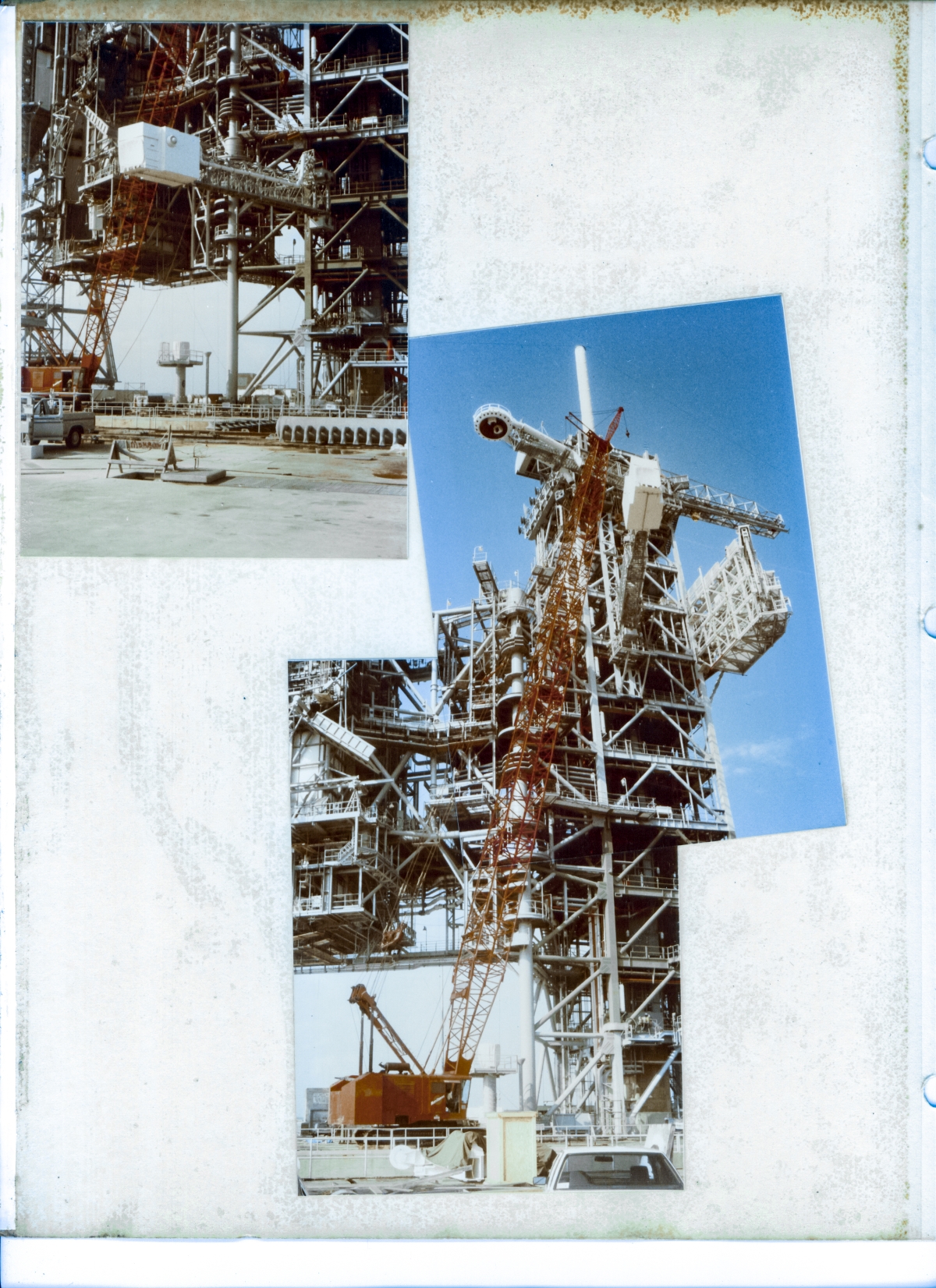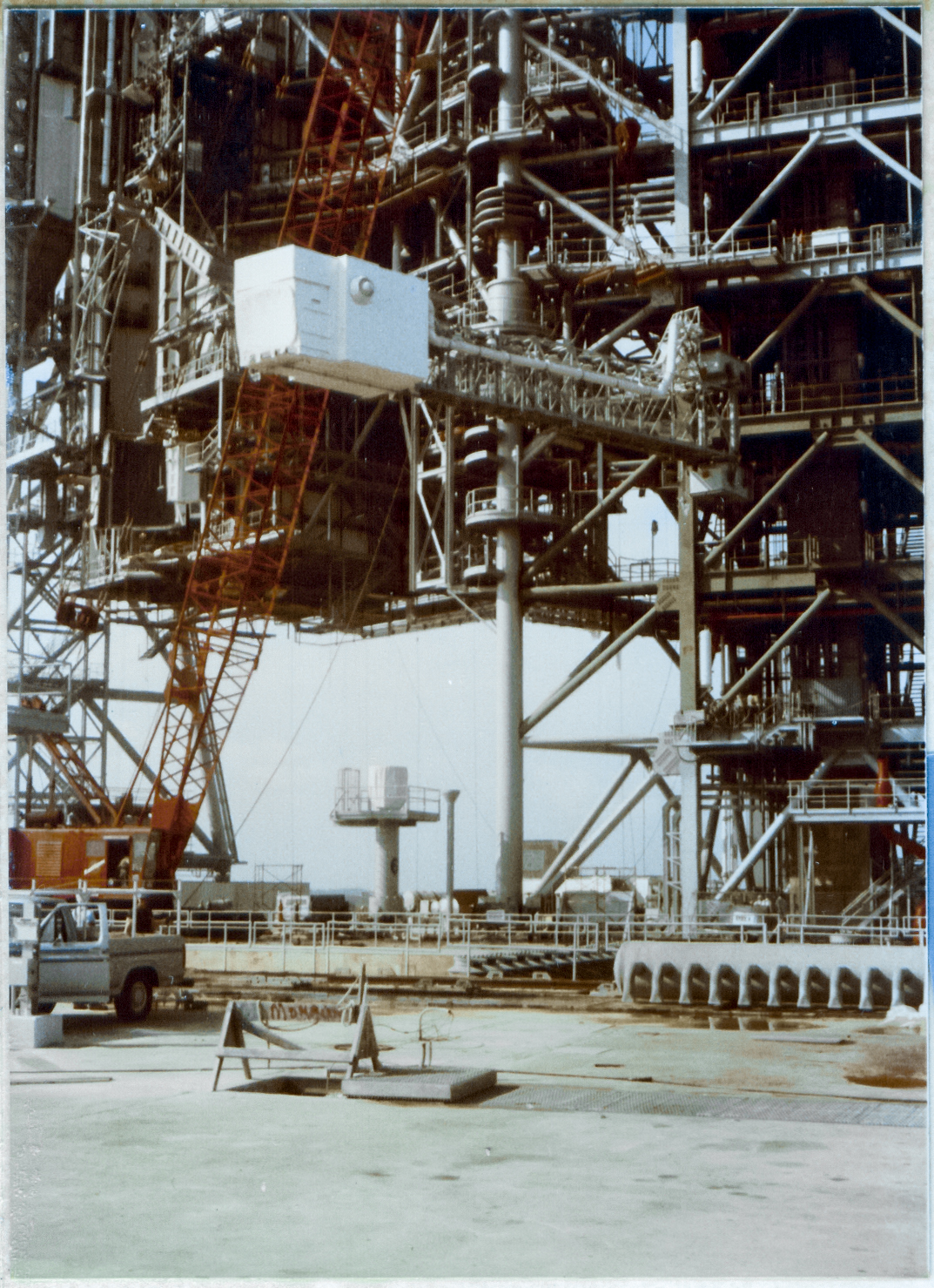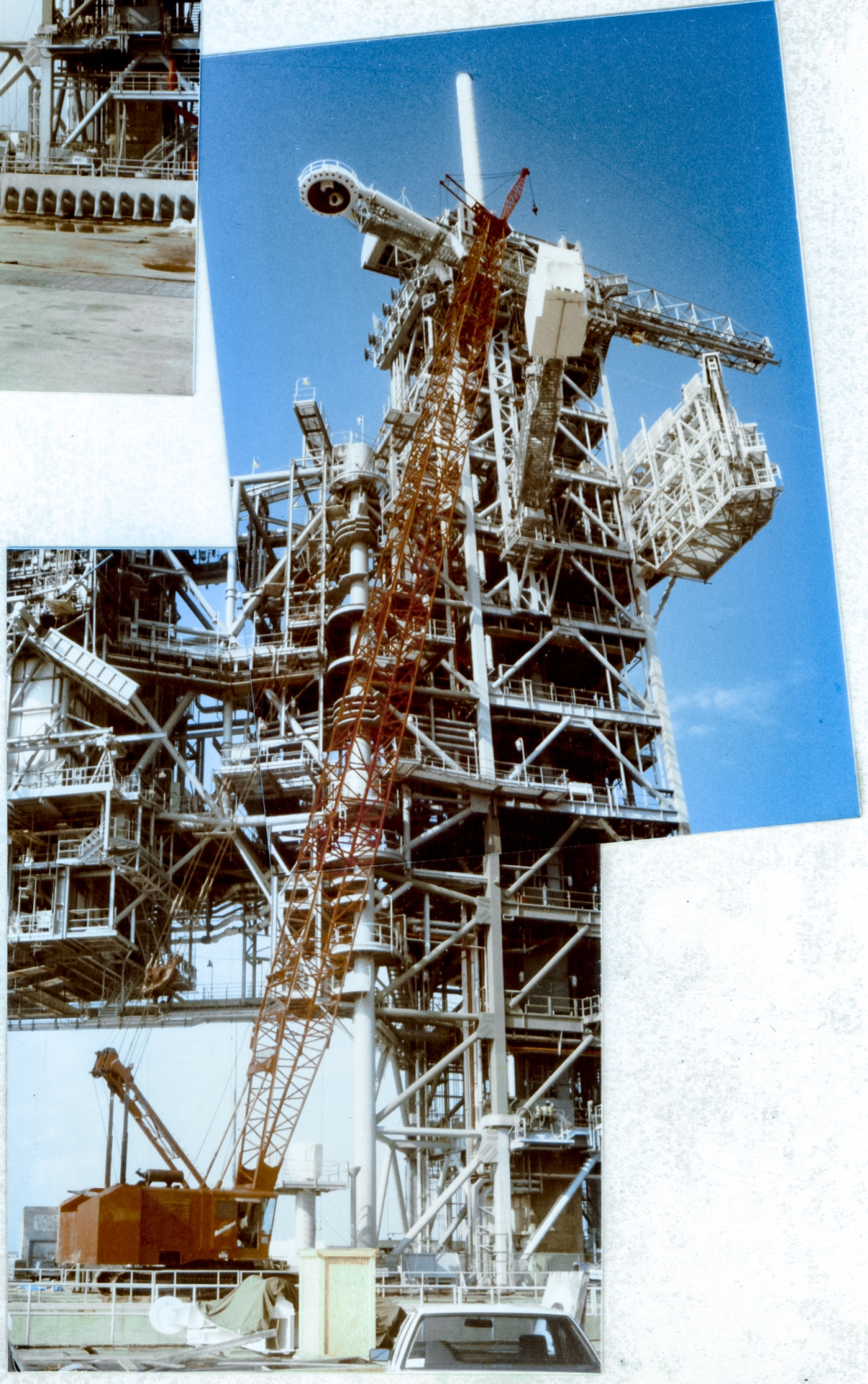Space Shuttle Launch Complex 39-B Construction Photos
Page 22
OAA Lift 2
(Original Scan)
And up it goes.
In the olden days, if you wanted a panorama, you had to carefully assemble photographic prints together in order to make one.
Which is what I did.
Kind of gives a good look at the labyrinth of steel beams and columns that make up the RSS & FSS.
Every last bit of it is there for a reason, had to be designed for its job, fabricated, shipped to the job site, inspected, lifted into place, fastened to the growing structure by ironworkers, and inspected again. And it all had to be kept track of, on its own, and as an integral part of the overall assembly. My job was to keep track, inspect, write paper when things did not go as planned, and generally ride herd on things in a sufficiently organized manner that would permit other agents and agencies to also keep track and ride herd on things. Sometimes it was fun, sometimes it was excruciatingly tedious, and sometimes is was extraordinarily frightening.
After they lost Challenger, which was the very first Shuttle flight off of Pad 39-B, nobody knew anything for weeks and weeks, and the very real possibility that a piece of our launch pad had come loose and hit it on the way up was everpresent in the back of my mind.
It was nice work while it lasted, but I'd never do it again for all the money in the world. It is deeply stressful work, and the stress accumulates and begins to eat away at you like some kind of slowly-growing poison in your bloodstream. I grew up in the shadows of these launch pads. My parents arrived in this area during the mid 1950's as members of the first wave of aerospace immigrants to what had been, up to that time, a vast and very thinly populated wilderness of swamp, mosquitoes, brutal heat, and alarmingly dangerous wildlife. I am a Child of the Space Program. And even as a small child I could see the corrosive effects of the stress that everybody's mom and dad endured, day in, day out, year after grinding year after year, and a lot of people didn't make it. Suicides, rampant alcoholism, astoundingly disfunctional families, a thousand different personality disorders, and people could not walk away from it. And in the end, it consumed them. The flames of the rockets that fly from this place put out a light so bright that it literally turns night into day. But the light can never quite manage to erase all of the darkness. That darkness can be pushed as far back into the corners and crevices of people's lives as you might like to push it, but it can never be made to go away entirely.
Additional commentary below the image.

Top: (Full-size)

The OAA is now traveling upwards, and the first thing you should notice in this image is that there is no longer any opening in the end of the white room that would be facing the orbiter when the arm was extended in its working orientation. And that's because there is a cover for the opening in the end of the arm, when it's not in use. Keeps the bugs and birds, wind and weather, and everything else, out of the clean room.
On the pad deck, extending out of frame to the right, the gray centipede-looking thing is one of the SSW spray headers, laying near the edge of the flame trench, where it will eventually be placed in its final location against the top edge of the flame trench wall. Immediately to its left, same level, you get a very low-angle look at the crest of the flame deflector, spanning the width of the flame trench, with its row of spray headers on top of it, which I mentioned as a potential location for the picture I took on the previous page.
In the near distance, a smallish sawhorse barricade blocks the opening in one of the cable (or perhaps piping) trenches that run along the pad deck, and the steel bar grating panel that covers the opening is sitting just to the right of it. Get a good look at the depth on that grating steel. I think the grating bars are six by three-eighths inch, hot-dip galvanized, steel plate, and they sit edge-up and are tied together by additional steel cross members. This is sturdy stuff, and should serve to give you some hint of what sort of environment we're working in here. The Space Shuttle was a big rocket, and the beating that the pad deck took from its exhaust as it took off can perhaps be inferred by the sturdiness of the construction of this grating panel. The pad was definitely a high-energy place, and everything was designed and built to take one hell of a beating every so often. Also, cranes and other very heavy mobile equipment could be expected to traverse the pad deck on occasion, and that too made for extra-stout design considerations for everything up there.
Bottom & Right:
(Reduced)

Old-school panorama, stitched together from a couple of print photographs.
We did the best we could, with what we had, and I remember taking a lot of shots with an eye toward assembling them together, afterwards.
Get a look at the astounding complexity of the FSS/RSS structures.
At one time, I literally knew every single piece of structural steel in this picture, on a personal and individual level.
All of it.
And yet I find myself looking at it now and thinking to myself, "Mister, you're lying."
And yet there it all is, right there where we put it.
Nothing happened by accident.
Every last bit of it had to work, and did work, once as an individual, and again as a member of a sort of gigantic symphony orchestra of cold, unyielding, steel.
The accumulating stress was slowly killing me, but I will not kid you, I miss that fucking pair of towers. But they are gone. Gone forever.
Return to 16streets.comACRONYMS LOOK-UP PAGEMaybe try to email me? |